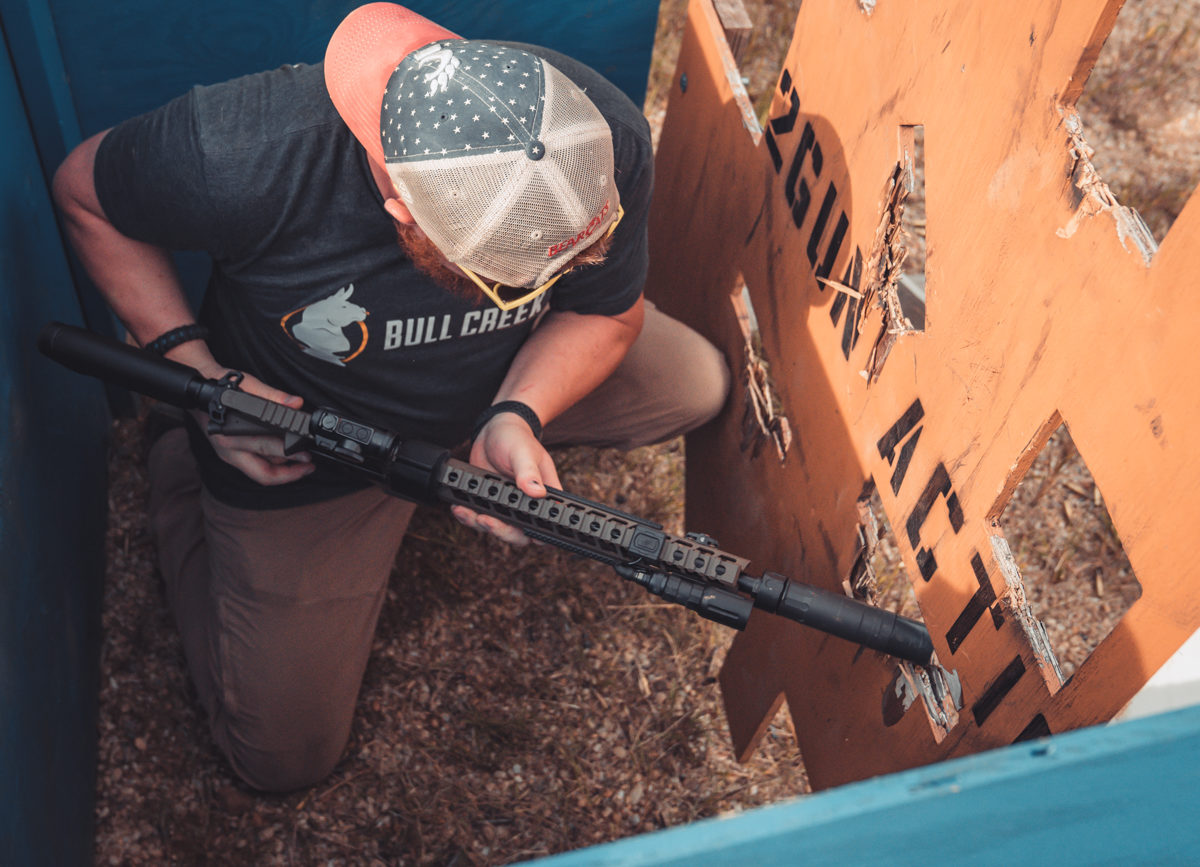Why Hearing Protection Doesn't Cut It
Difficulty hearing someone in the midst of background noise, random ringing in your ears, we all experience it: hearing loss. You’ll have damage even if you’ve never shot without hearing protection. That’s because we’ve grown up under the assumption that ear pro alone will save our hearing. Unfortunately, this isn’t the case.
The concussive blast from a firearm vibrates your facial bone structure each time you fire, damaging the tiny bones in your ears. This vibration is amplified in enclosed environments such as a barricade or indoor range, causing even more damage. Unfortunately, neither in-ear nor over-the-ear hearing protection can prevent this from occurring. Mark Kuczka, from Accurate Ordnance, published an article covering this topic, if you want to know more about concussive hearing loss.

Concussion aside, your hearing protection is not providing nearly as much sound reduction as you’d think. As you may have noticed, most ear pro shows a Noise Reduction Rating (NRR), but this rating doesn’t actually represent how much decibel reduction they provide. To convert NRR to dBA* (dBA is the industry standard and is commonly referred to as just dB.) you have to subtract 7 from the NRR. Additionally, the National Institute of Occupational Safety and Health (NIOSH) found that in real-world applications earmuffs are 25% less effective than labeled, formable earplugs are 50% less effective, and all other earplugs are 75% less effective. After all that, even the top hearing protection is only providing about 17 decibels of sound reduction.
Now, to put this all into perspective, a rifle is around 165dB and with the best hearing protection (a reduction of 17dB) your perceived sound would still be 148dB¹. Even with hearing protection, your rifle is still well over the 140dB hearing safe limit. (Keep in mind 140dB is only considered hearing safe for one shot every 24 hours.) This would be the situation using the best ear pro – if you’re using standard foamies, your perceived sound is about 159dB² (based off of a 6dB reduction). If you are interested in seeing the math, it’s provided at the end of this article. You may now understand why you have that sweet sound of tinnitus singing you to sleep every night.
Fortunately, suppressors help mitigate the effects of concussions and drastically reduce sound levels, however, we still recommend using ear protection as most suppressors don’t bring the levels below the hearing safe limit.
For reference, we’ve provided a chart that shows how many shots on average you can fire at a specific dB before causing hearing damage.

Traditional hearing protection does serve a purpose, but alone is not enough to prevent hearing damage. If you’re looking to truly protect your hearing as the CDC put it, “the only potentially effective noise control method to reduce students’ or instructors’ noise exposure from gunfire is through the use of noise suppressors that can be attached to the end of the gun barrel.”
¹ 30 (30 NRR Ear Muff) – 7 (conversion to dBA) = 23, 23 – 5.75 (this is based on being 25% less effective in real world scenarios) = 17.25, 165 (**base rifle dB) – 17 (hearing protection dB reduction, rounded down) = 148dB
² 30 (30 NRR Foamies) – 7 (conversion to dBA) = 23, 23 – 17.25 (this is based on being 75% less effective in real world scenarios) = 5.75, 165 (**base rifle dB) – 6 (hearing protection dB reduction, rounded up) = 159dB
– dBA is based on the way the human ear hears
– 165dB is based on a 16” unsuppressed 5.56 rifle according to Silencer Central
– the mathematical formulas used are provided by the National Institute of Occupational Safety and Health (NIOSH)
Check out our selection of Rifle Suppressors and Pistol Suppressors! Learn about what makes us different here Why Rugged Suppressors!